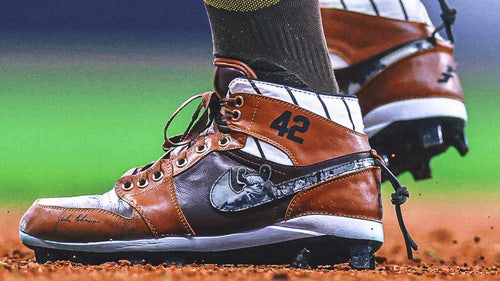
New York Mets and the Las Vegas 51s: not so perfect together
The New York Mets, a team ravaged by injuries this past season, had to deal with the unfortunate fact that their Triple-A affiliate resides two time zones away. But has it hurt them in their evaluation of their prospects?The New York Mets union with their Triple-A affiliate, the Las Vegas 51s, has been under scrutiny since they moved west in 2013. The injury tolls of the past two seasons that the Mets have suffered have made the issue more prominent.Marc Edelman of Forbes recently took a look at the relationship between the Mets and the 51s. He used three points to discuss why their contract with the team is the worst money they have spent (next to the annual Bobby Bonilla Day check they have to write each year we have to assume). While one of his points is obvious, the other two seem a bit simplistic in the approach.There is no denying the fact that Triple-A is, in essence, the extension of an organization’s big league club. In theory, they are the most Major League-ready players, and when injury and fatigue set in, they are the first called upon. Could you imagine if New York Yankees skipper Joe Girardi had to schedule a flight from McCarron International for his ever-changing bullpen?More from Call to the PenCincinnati Reds: Billy Hamilton Chasing Billy Hamilton43m agoCincinnati Reds REVISED Top 10 Prospects For 20171 h agoMiami Marlins REVISED Top 10 Prospects For 20172h agoHouston Astros Done Making Significant Moves3h agoToronto Blue Jays, Jose Bautista Happy With His Return4h ago As previously mentioned, this past season the Mets were decimated with injuries. The flight, and sometimes ensuing jet lag, was thus magnified in the much needed shuttle from Las Vegas to Queens. It definitely presents a disadvantage for any team that has to await the arrival of a prospect or veteran that had to travel over 2,000 miles to get there.Where Edelman can be debated, however, is his assessment that the Pacific Coast League is a detriment to the Mets in evaluating talent because of the lofty desert air. Anyone who covers or follows the minor leagues closely knows that the PCL is a launching pad. Power numbers have long been heavily inflated because of the air and the stadiums in which they play. But the thing is, every level of minor league ball has different park factors. Every level of minor league ball has leagues that are both power-happy and pitcher-friendly. Take High-A for example. The California League is a hitter’s paradise, while the Carolina League has a blend of hitter and pitcher-friendly ball parks. The Florida State League, however, leans towards the pitchers. Triple-A is no different.He suggests that the Mets evaluation of their pitching prospects is at a disadvantage and skewed playing in the thin desert air, and that they may have blundered in giving up too early on pitching prospects like Collin McHugh because of his time in the PCL. Let’s look at McHugh’s stats in his time in the PCL for the Las Vegas 51s:3-2, 2.87 ERA, 1.312 WHIP, and a 41-to-13 strikeout-to-walk ratio.Not too shabby, right? When you line it up with his numbers from the previous season with the Mets then-Triple-A affiliate in the light-hitting International League (2-4, 3.42 ERA, 1.208 WHIP, and a 70-to-29 strikeout-to-walk ratio) it seems that McHugh improved in the PCL, doesn’t it?new york metsRising Apple 1 dMets and Las Vegas: A match that wasn't made in HeavenMore headlines around FanSided:1 d - Brandon Nimmo in, Michael Conforto out of Italy's World Baseball Classic roster1 d - Former Met James Loney signs with Texas Rangers2d - Mets fans, here's proof of Matt Harvey throwing off a mound2d - Oakland Athletics sign former Mets outfielder Alejandro De Aza3d - Mets starter Jacob deGrom talks rotation, friendship, and 2017 seasonMore News at Rising Apple The Mets don’t simply evaluate prospects base on stats. They look at mechanics and metrics (McHugh had a 3.72 FIP in the PCL as opposed to a higher 3.94 FIP in the IL) and, most importantly, depth. The Mets dealt McHugh from a position they were extremely deep in — and in fact became deeper in the next season — starting pitching. They dealt him because they felt he would be a lesser talent than the other pitchers they had on the pipeline, not because of the numbers he accumulated in 53.1 PCL innings. As a pro, McHugh has performed exactly how they projected he would: good, but not great.He then suggests that it could have the same effect on the offensive prospects. That the conditions of the PCL could in fact mislead the Mets to misevaluating them. He says that they may promote hitting prospects based on their inflated stats, overlooking that their mechanics are off and that they can’t hit off speed pitches that are manipulated in the air of the PCL.Travis Taijeron has proved this to be false. Over the past two seasons, despite the streakiness and injuries that the Mets outfield has struggled through, Taijeron has remained in the PCL. Instead the Mets have gone with names like Michael Conforto, who had never seen a Triple-A pitch before his big league debut, or Brandon Nimmo, who has long been considered one of the top Mets prospects.Taijeron has sat in Triple-A, leading the 51s in home runs for the past two seasons (and the entire PCL in doubles last year as well). Why? Why would the Mets pass on such a big power bat, especially when their offense has been anemic at some points over the past two seasons? Because Taijeron has struck out 30.8 percent and 30.7 percent of the time each of the past two seasons. The Mets problems with analyzing their offensive prospects’ shortcomings have not come from over analyzing their performance in the PCL.Next: Yankees First Team to Number UniformsThere is no denying that having a Triple-A affiliate in a different time zone is not the best predicament for any organization to have. To suggest that the people in the Mets organization have been mislead by the PCL in their evaluation of their prospects doesn’t seem very fair to those in the Mets organization. While this is a problem the Mets will likely look to remedy when their contract is up, it has little to do with the development of their prospects.This article originally appeared on













































































































































